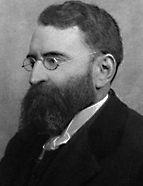

Focusing on the historiographical aspect of his work, we would highlight that this is most evident in his lectures on social hygiene (1884), namely hygiene in Portugal, the evolution of burial, interment and cemeteries, and cremation. The historical perspective runs through these texts, with particular emphasis on the first (Hygiene Social aplicada à Nação Portuguesa, 1885).
If he used history to explain science, Ricardo Jorge also called for the cultivation of other emerging areas, such as sociology and psychology, in the texts published in Revista Científica, of which he was one of the creators and editors (1882). Years later, when presenting the collection of these texts in Ensaios Científicos e Críticos (Scientific and Critical Essays, 1886), Ricardo Jorge acknowledged his eclecticism: “in pointing out these scattered fragments of biology, philosophy, history, pedagogy and criticism, before this multicoloured and heterogeneous fabric, I felt a vague and intimate voluptuousness; as if the spirit smiled at me, portraying itself in the changing colours of that kaleidoscope” (Ensaios scientificos..., 1886, p. 17). He reaffirms himself as an evolutionist, following in the footsteps of Spencer (whose translation of “Education” he prefaces), arguing that all “instruction must be essentially scientific,” that science must take the place previously occupied by classical studies, “of false brilliance,” since the scientific stance should sustain consciousness and knowledge and override dogma (Idem, pp. 128-129).
His stay abroad, which allowed him to come into contact with new medical trends and practices, influenced his proposal for “renewal in education, especially in the Porto School”, which was set out in the Report Presented to the Higher Council of Public Instruction as delegate of the Porto Medical-Surgical School (1885). This text includes a first chapter entitled “History and Statistics”, which provides a documented chronological overview of the emergence of the Porto School, teaching conditions and medical and surgical practices. The historical exercise returned in 1888, with Gerês Thermal, which examined the “interesting details of history and bibliography, in addition to the hydrological explanations” of this resort, where he had interests in the exploitation of the concession and took over the clinical management. Shortly afterwards, he devoted a chapter to the history of Caldas do Gerez - Guia Thermal (1891).
This work is financed by national funds through FCT - Foundation for Science and Technology, I.P, in the scope of the projects UIDB/04311/2020 and UIDP/04311/2020.
